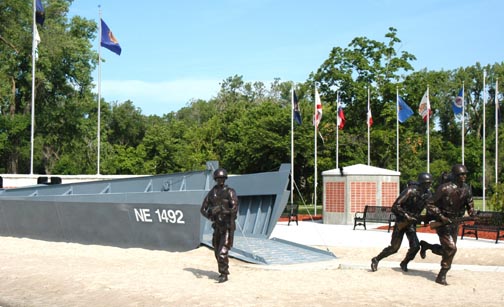
|
|
Andrew Jackson Higgins Memorial
Columbus Nebraska |

|
|
Andrew Jackson Higgins Memorial
Columbus Nebraska |
Columbus Nebraska was a charter member in the first incarnation of the Nebraska State League in 1910. Visiting the town was a pleasant experience. The library was functional but their film copies of the local papers of the time was of low quality. The town of about 21,000 people has a number of interesting parks, historical sites, museums and other attractions. It is a fun day trip.
|
I have not been able to determine where the baseball field for the
Columbus franchise was during its 1910-1915 tenure. During the debate on
the Sunday baseball issue, it was mentioned that the home field was in an
area where crowd noise would not impact any residential area of the city.
The current baseball stadium is used by school, legion and semi-pro teams. It is a functional stadium with aluminum stands and a well manicured field. The aluminum stands detract from the overall ambiance of the place. The town itself has many other attractions including a number of buildings on the National Register of Historic Places. |
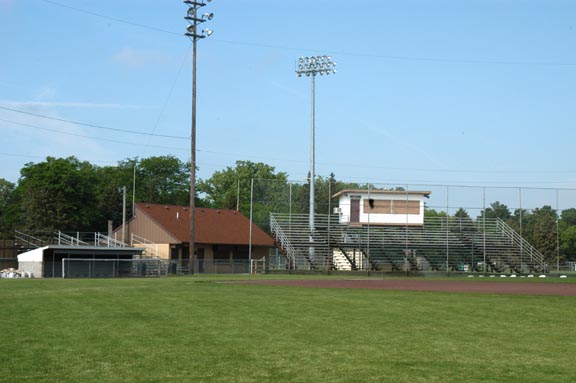
|
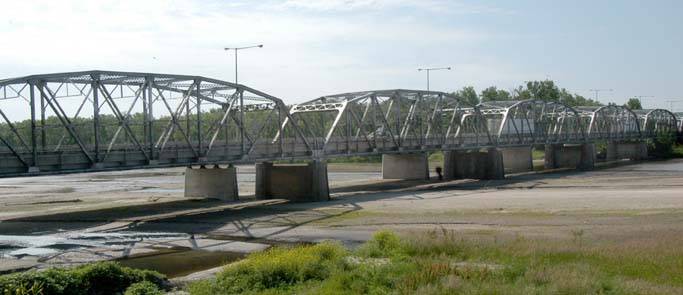
|
|
| The Loup River Bridge at Columbus is a 7 span 8 panel Parker through truss. The bridge was built by Omaha Steel Company in 1932-1933. Highway 30 (the Lincoln Highway) and highway 81 (the Meridian Highway) both use this span to cross the river. It is 1270 ft. long and is the longest truss span bridge in Nebraska except for those crossing into Iowa. The bridge is on the National Register of Historic Places. |
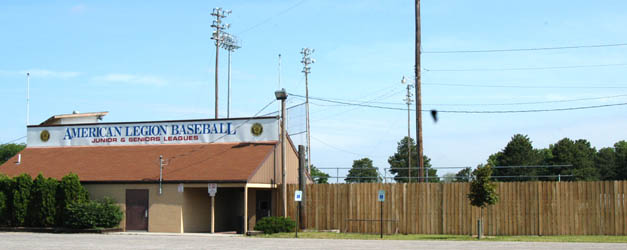
| One of the highlights of the visit to Columbus was the Andrew Jackson Higgins Memorial. Located in Pawnee Park near the Loup River bridge, the monument is worth a visit. Andrew Jackson Higgins was born in Columbus and educated in Omaha. He moved to New Orleans and was responsible for the design and construction of the Higgins boat. Higgins Industries built over 20,000 boats during World War II and Korea. The web site referenced above is an excellent resource on this memorial and the man who built the Higgins boat. |
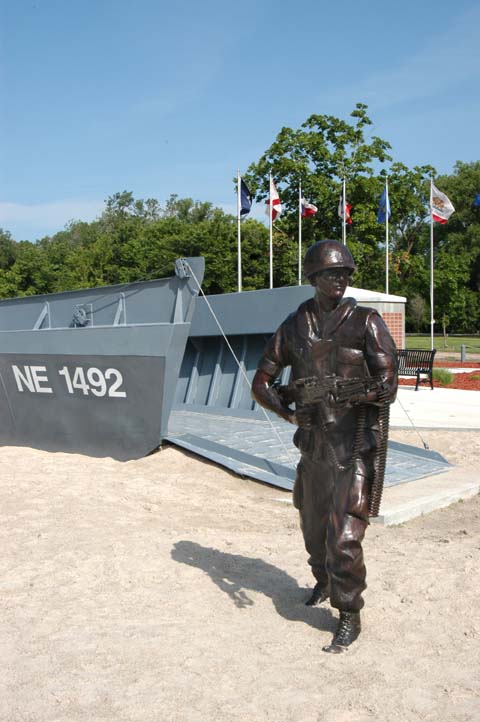
|